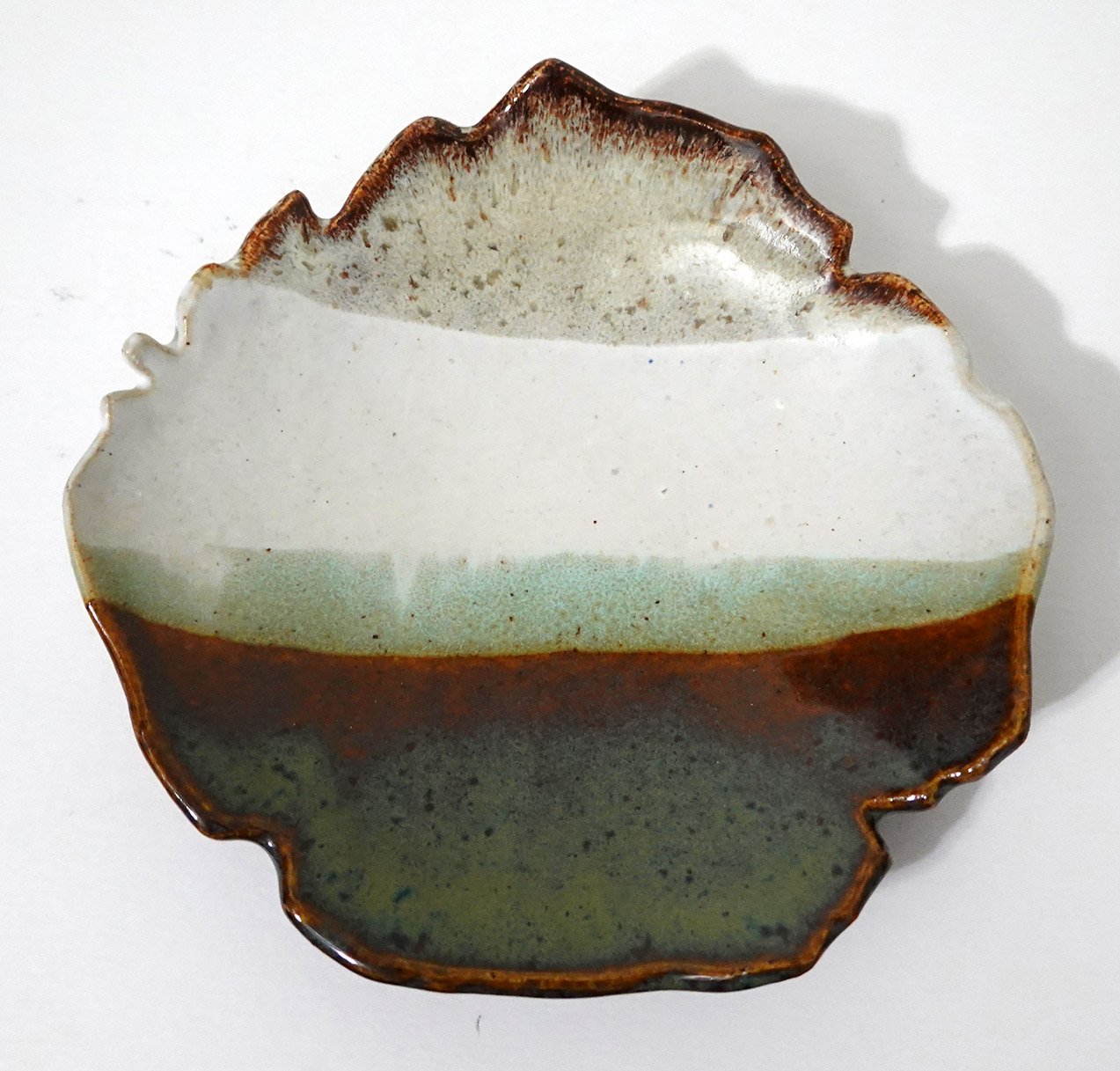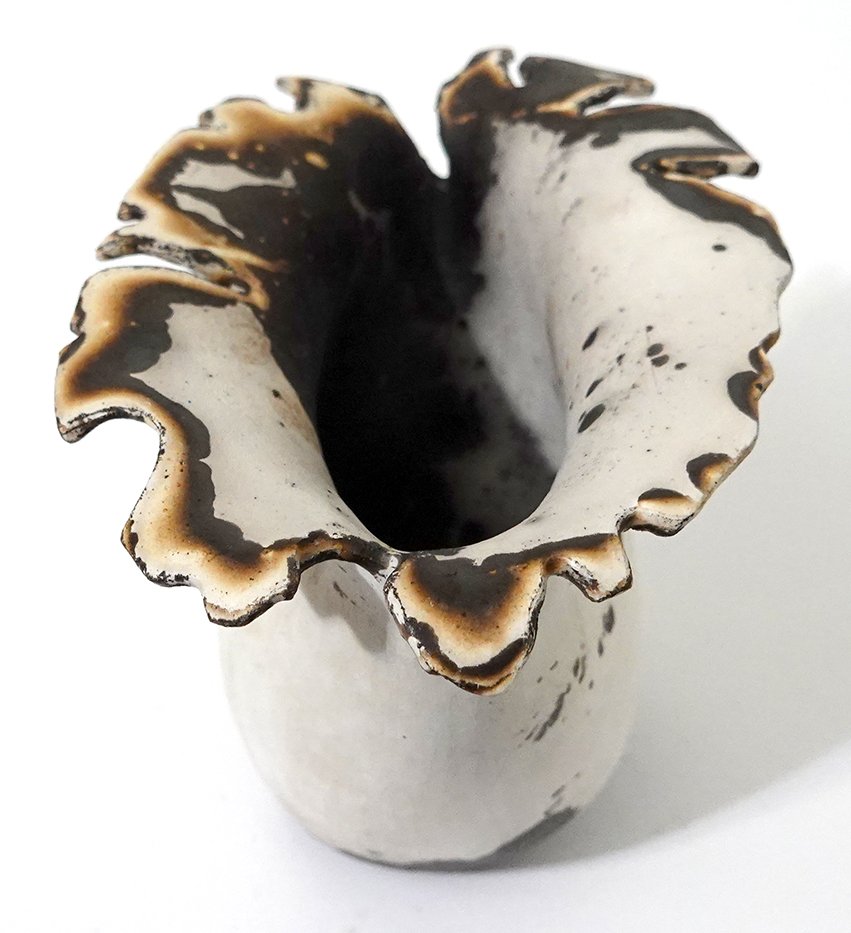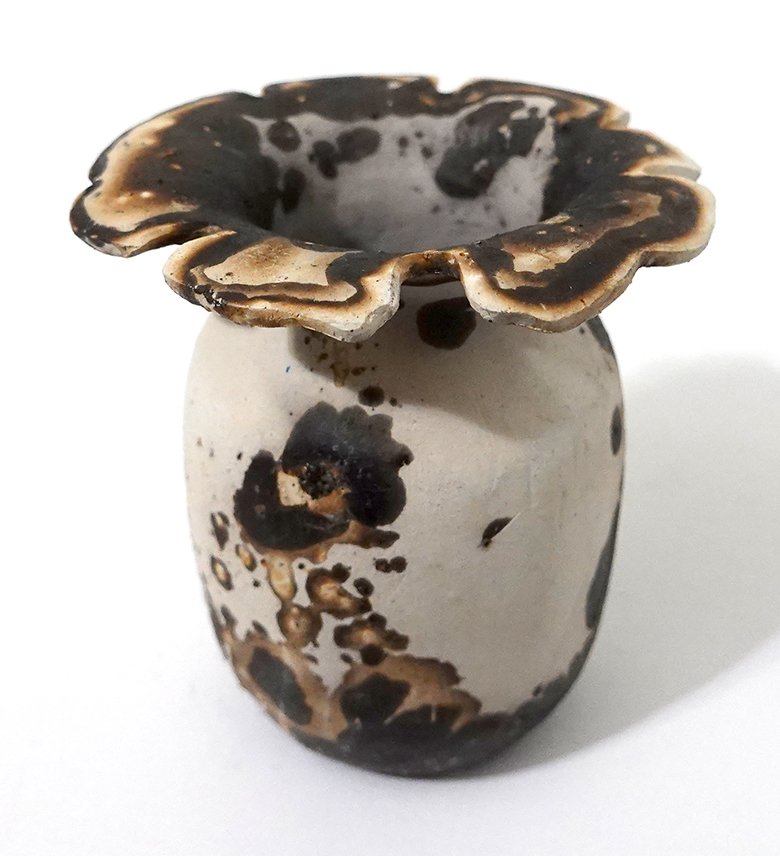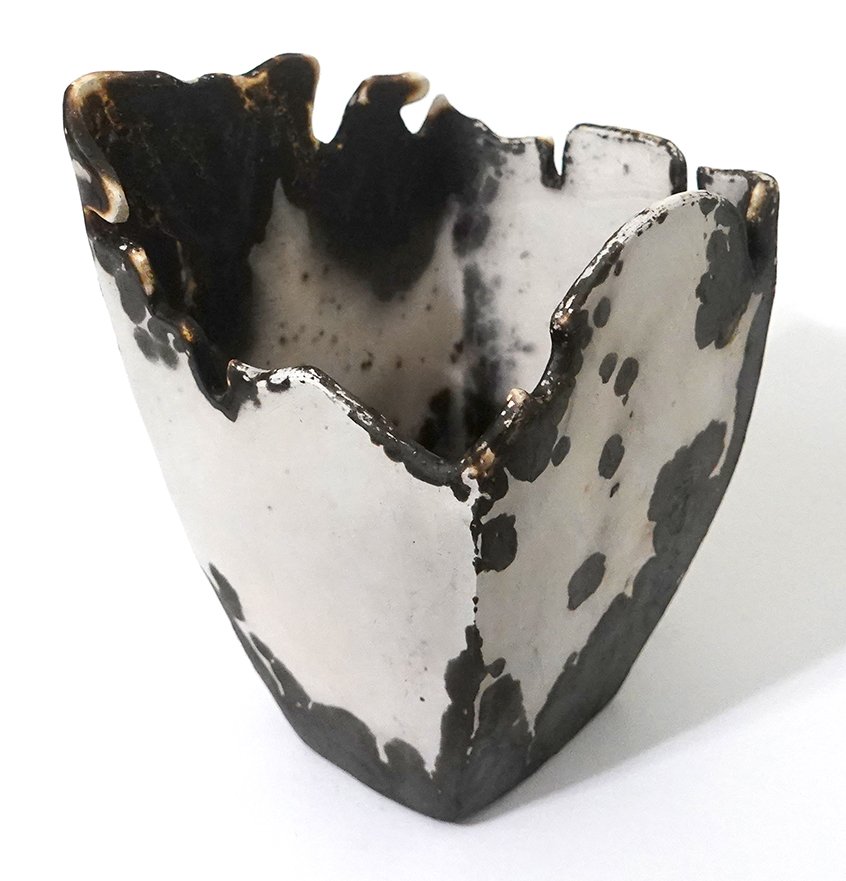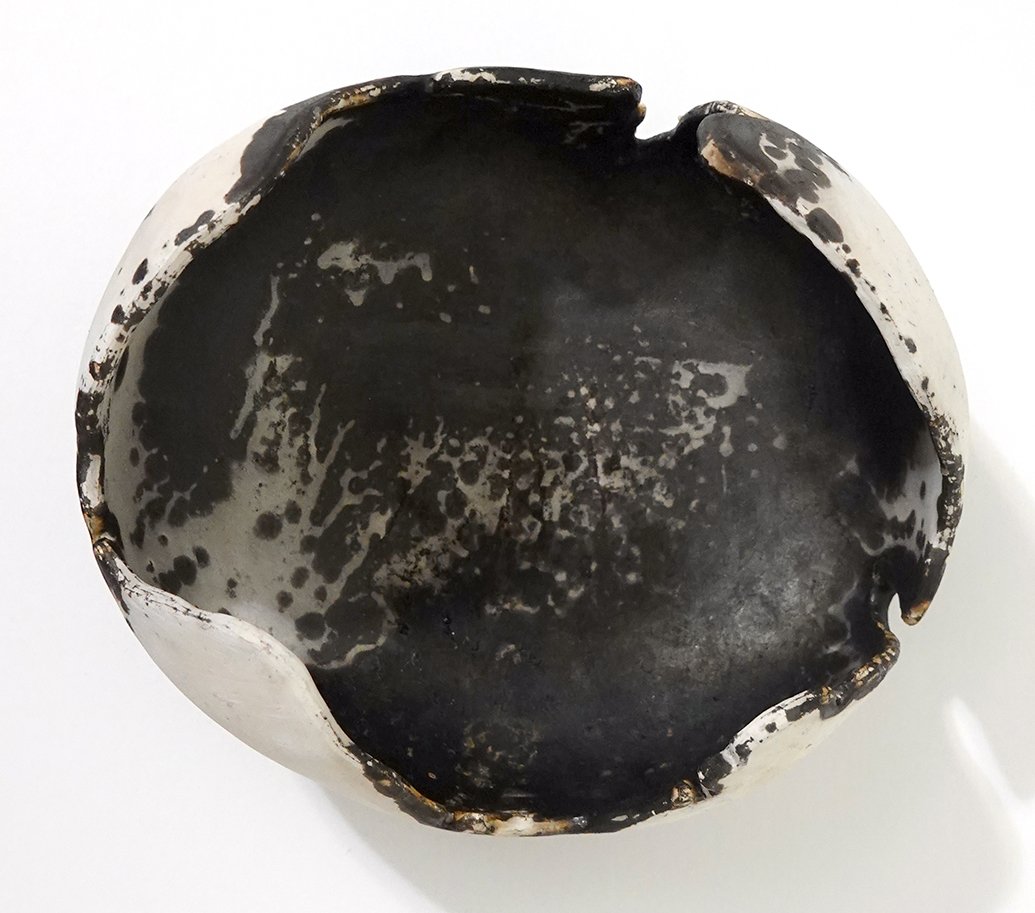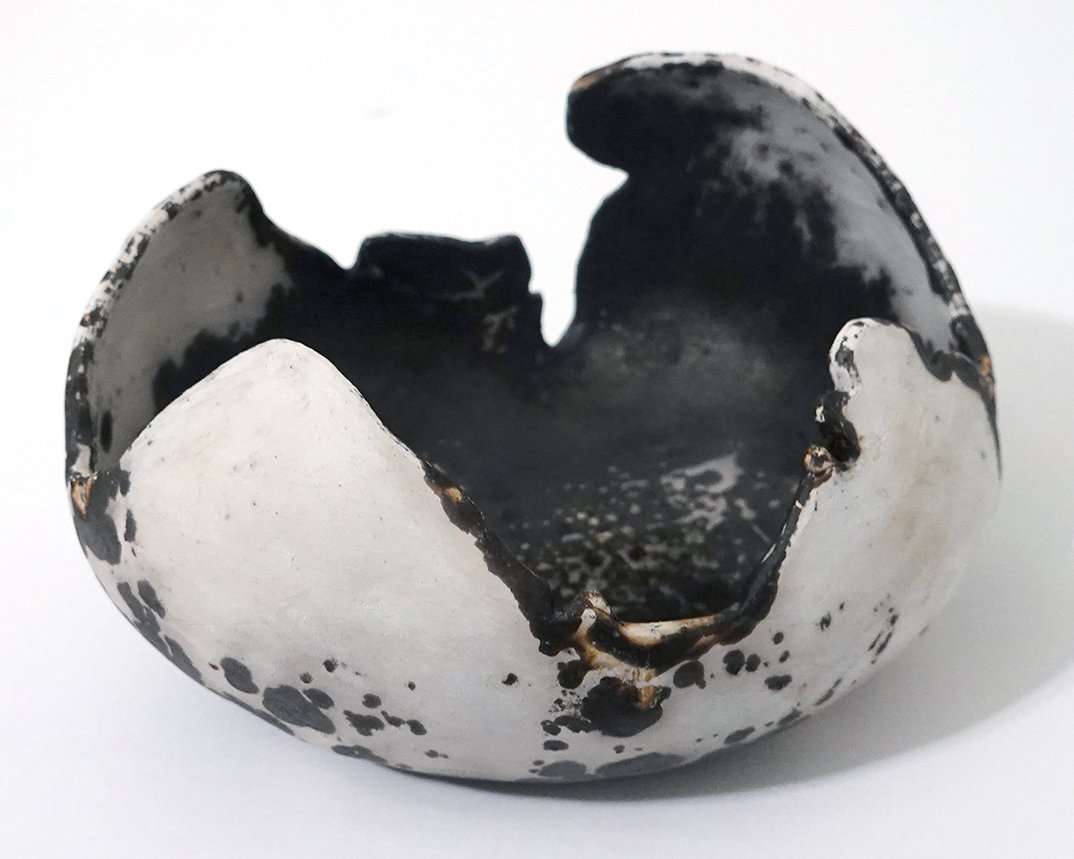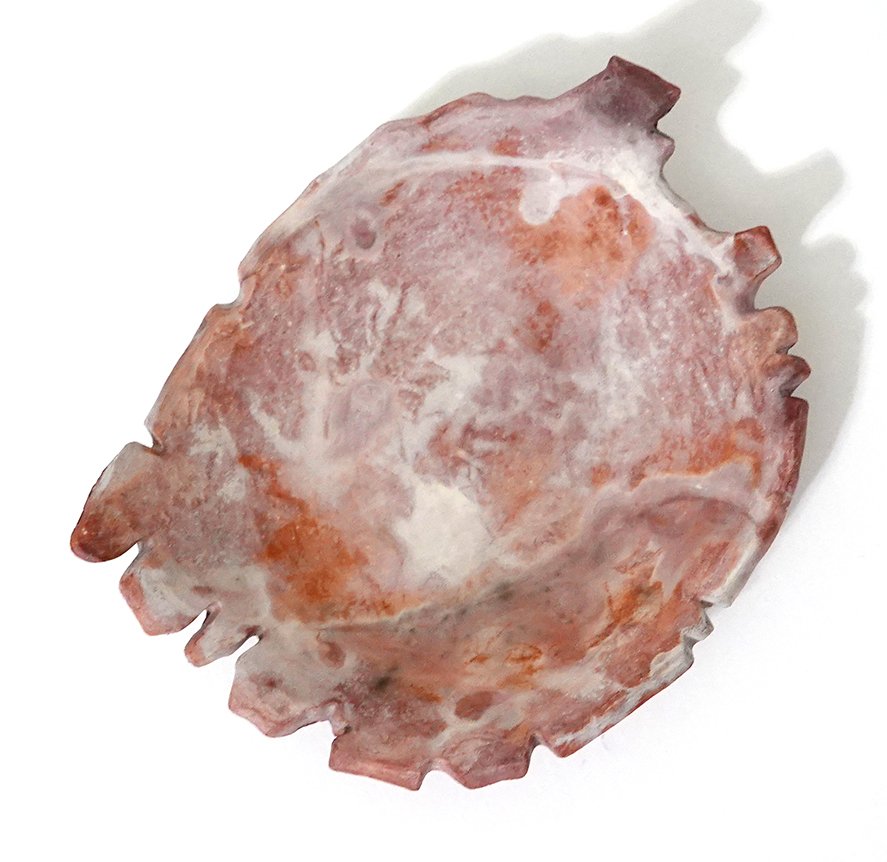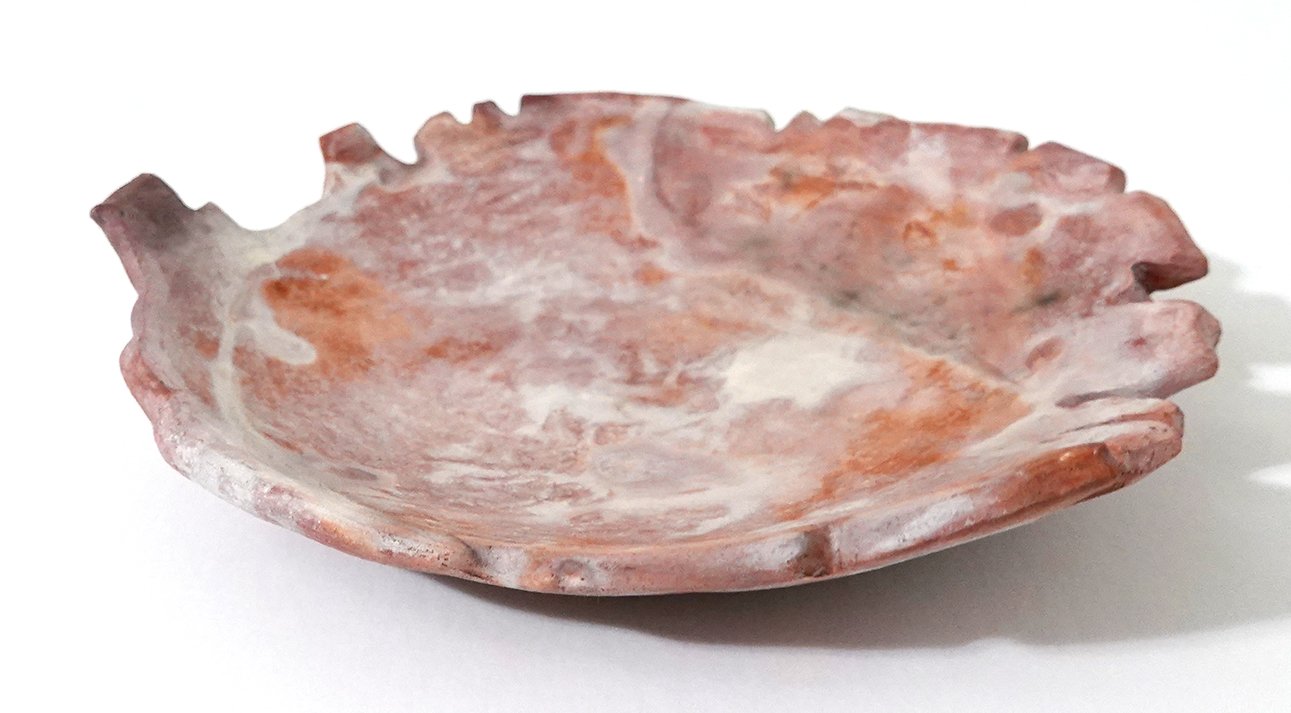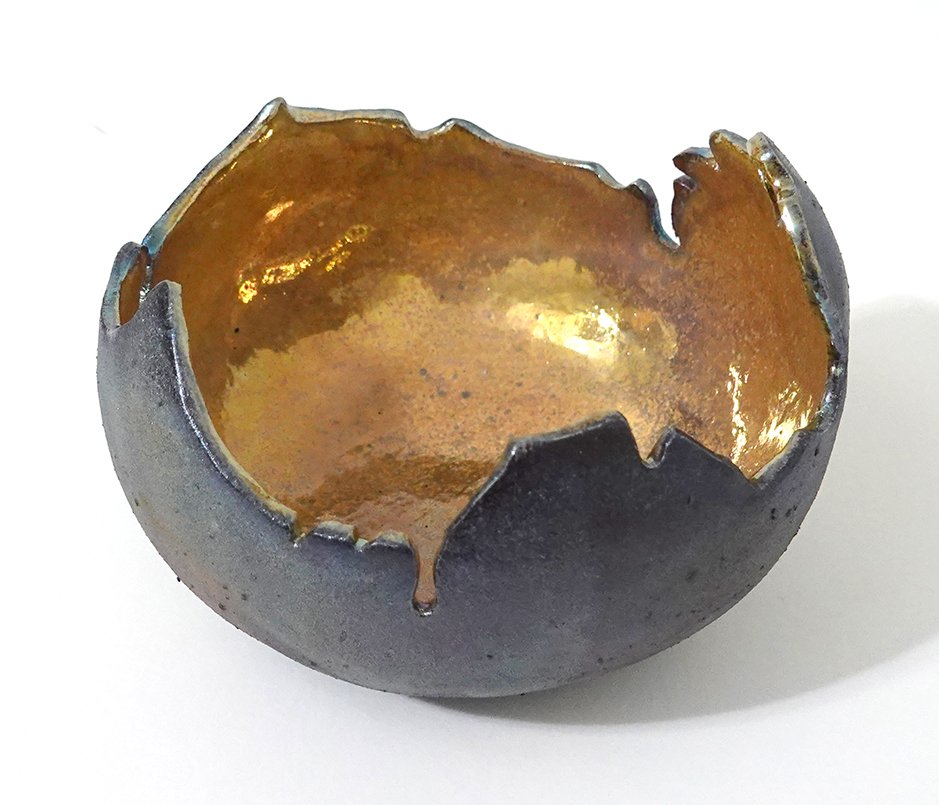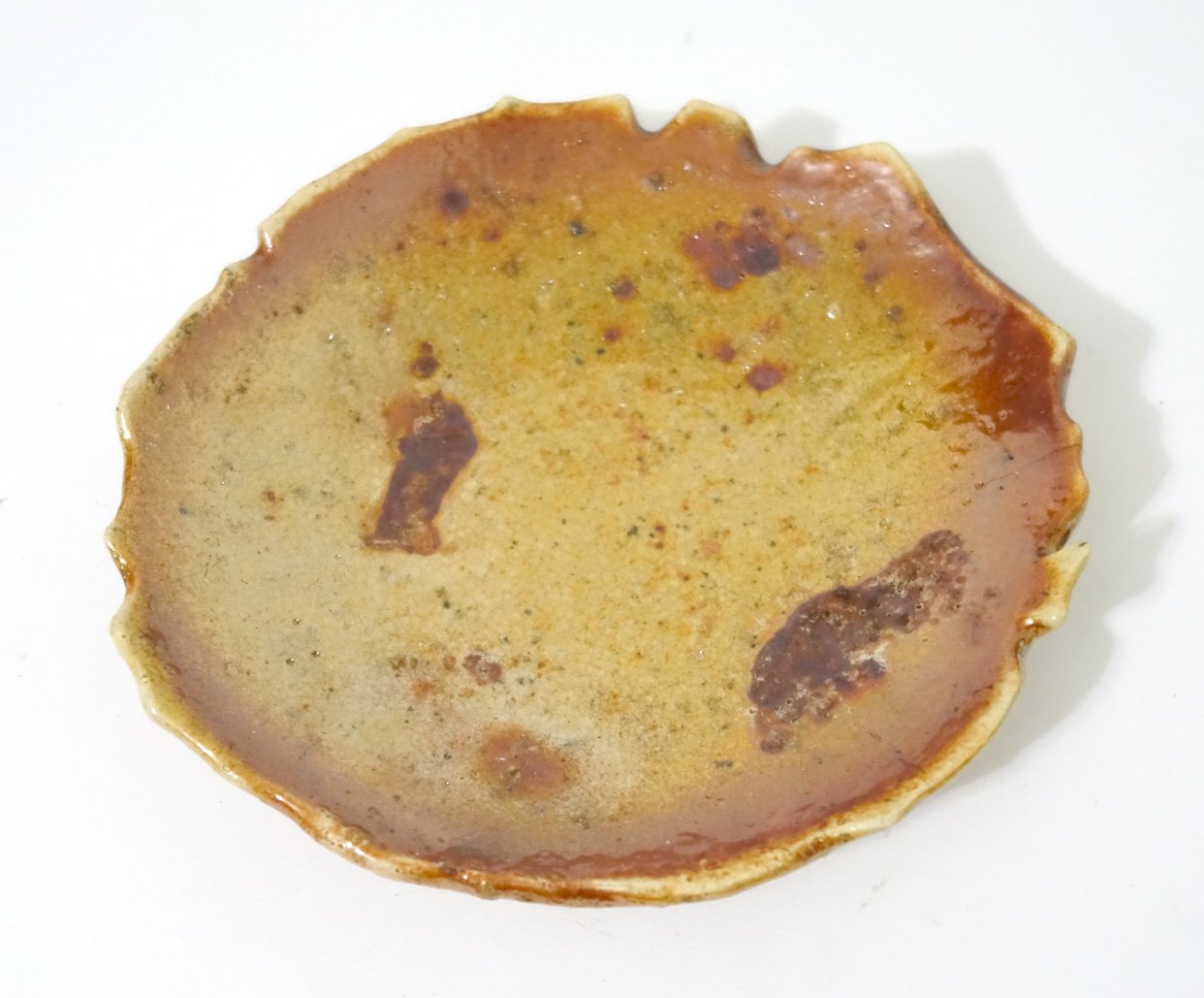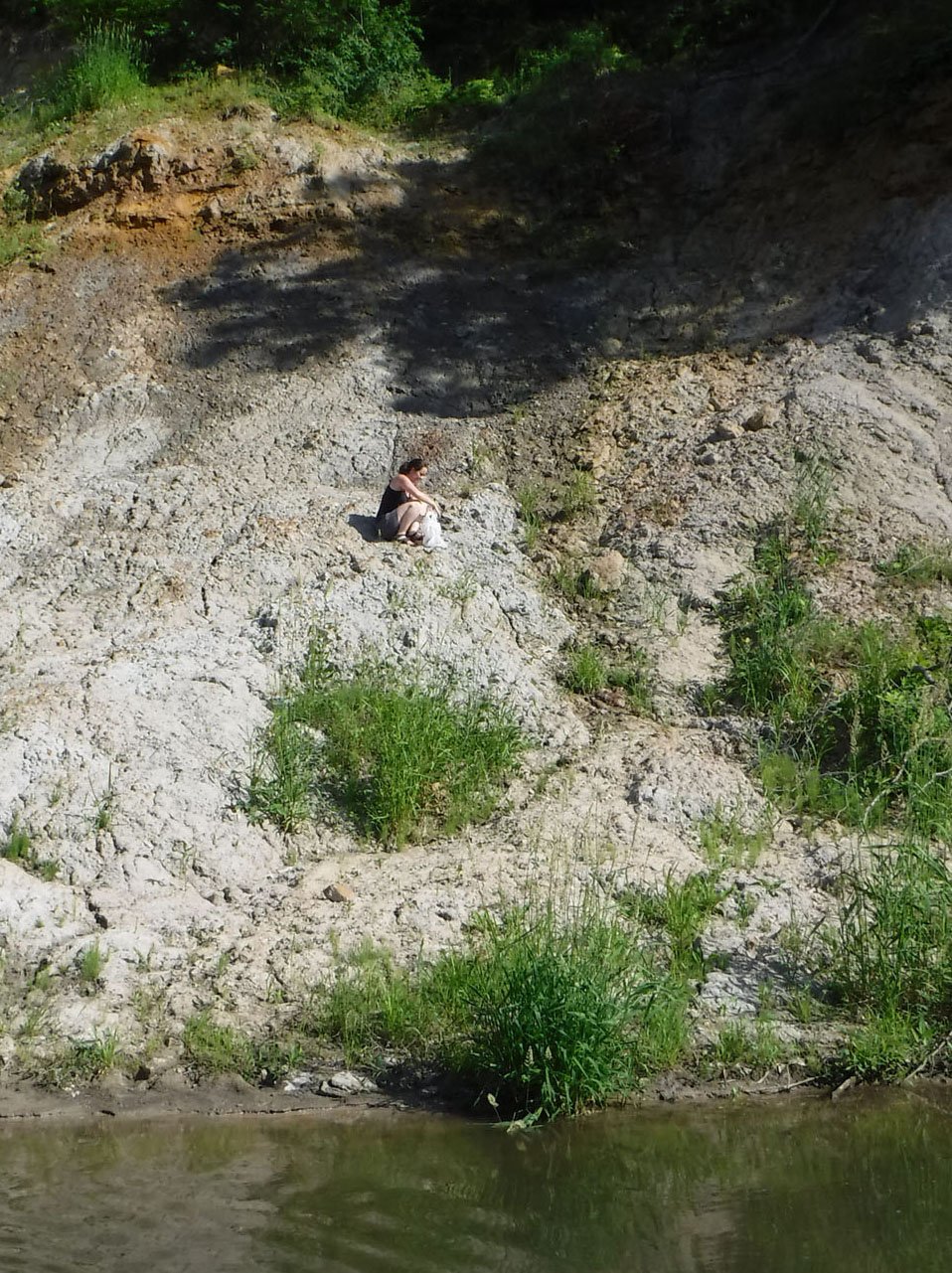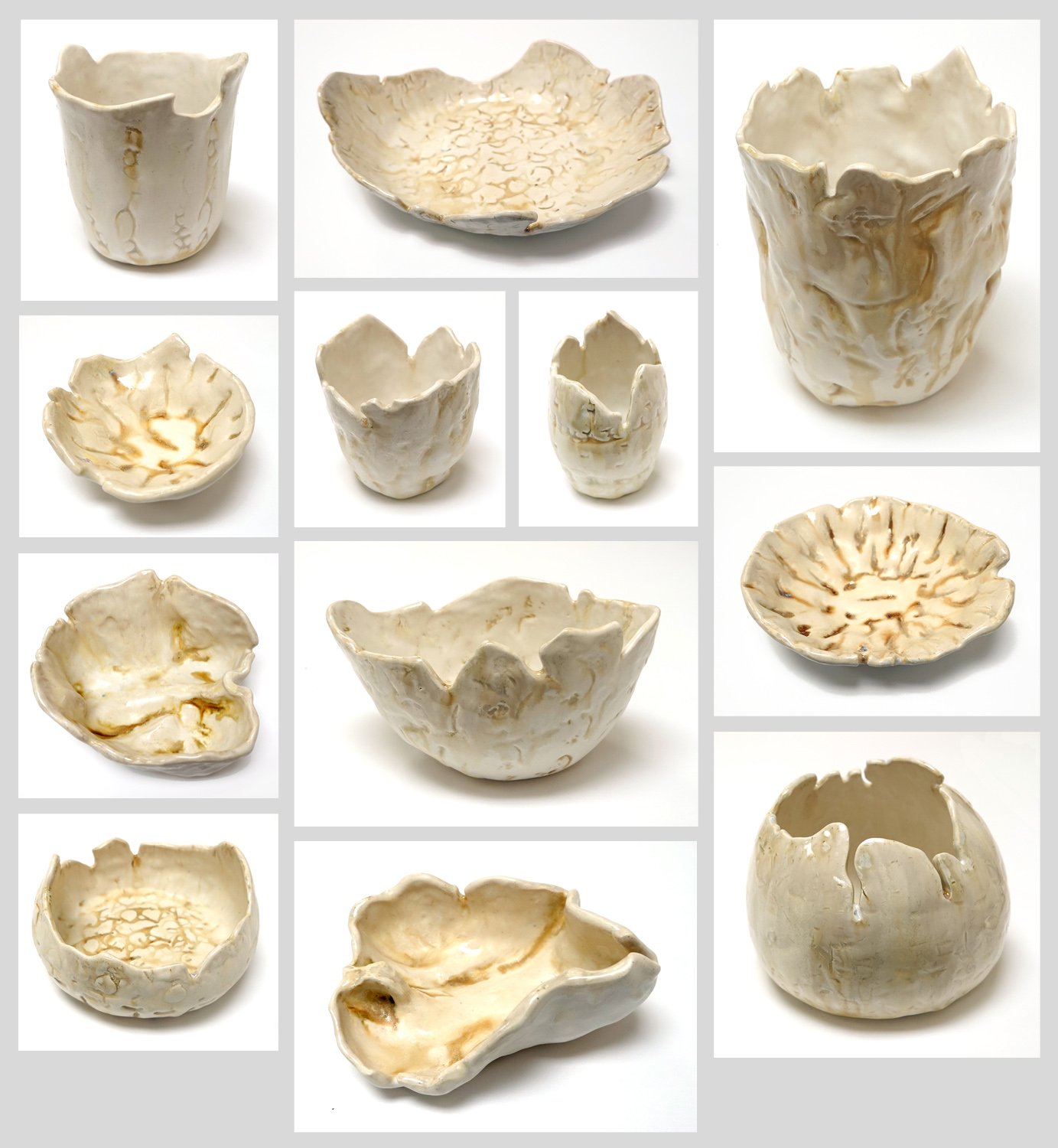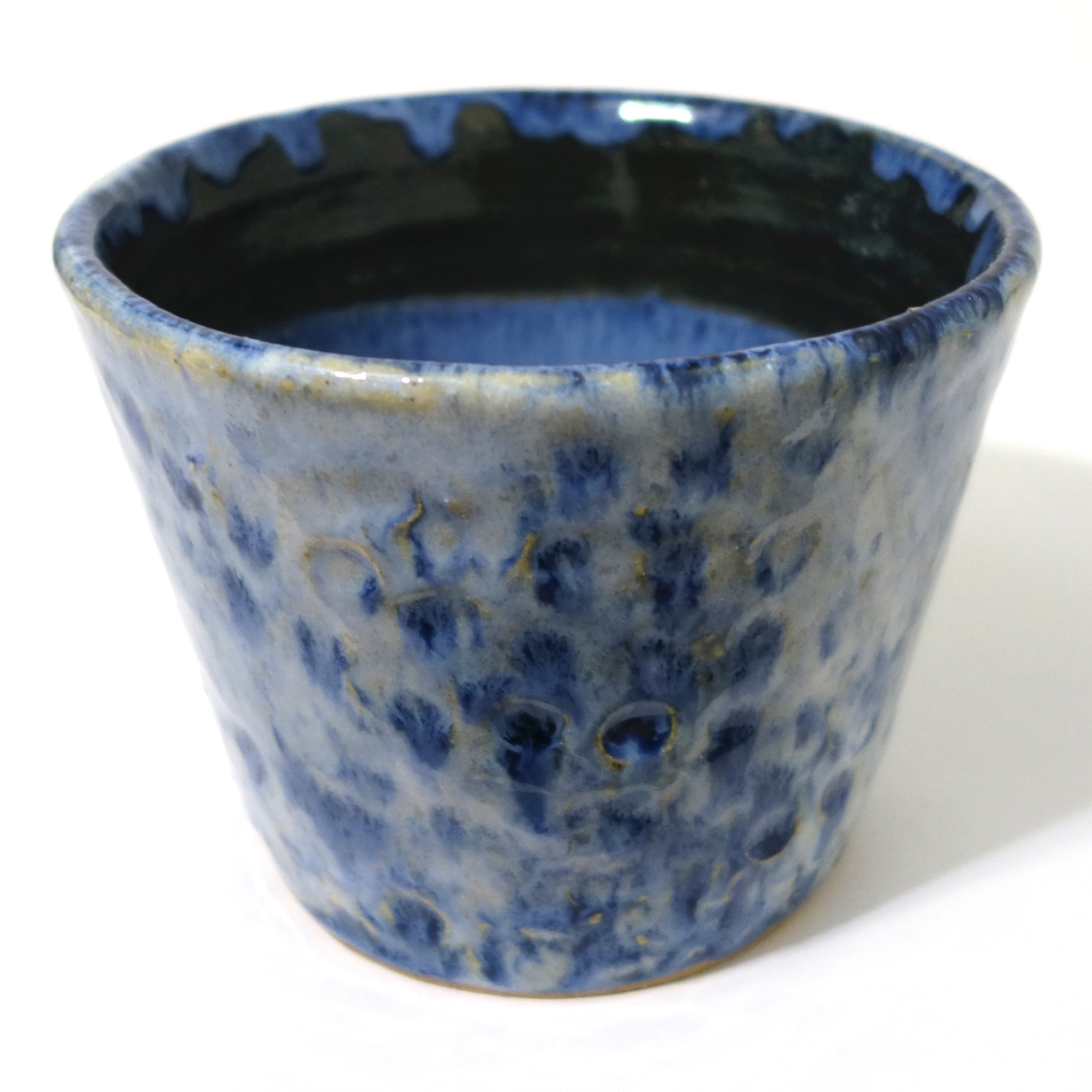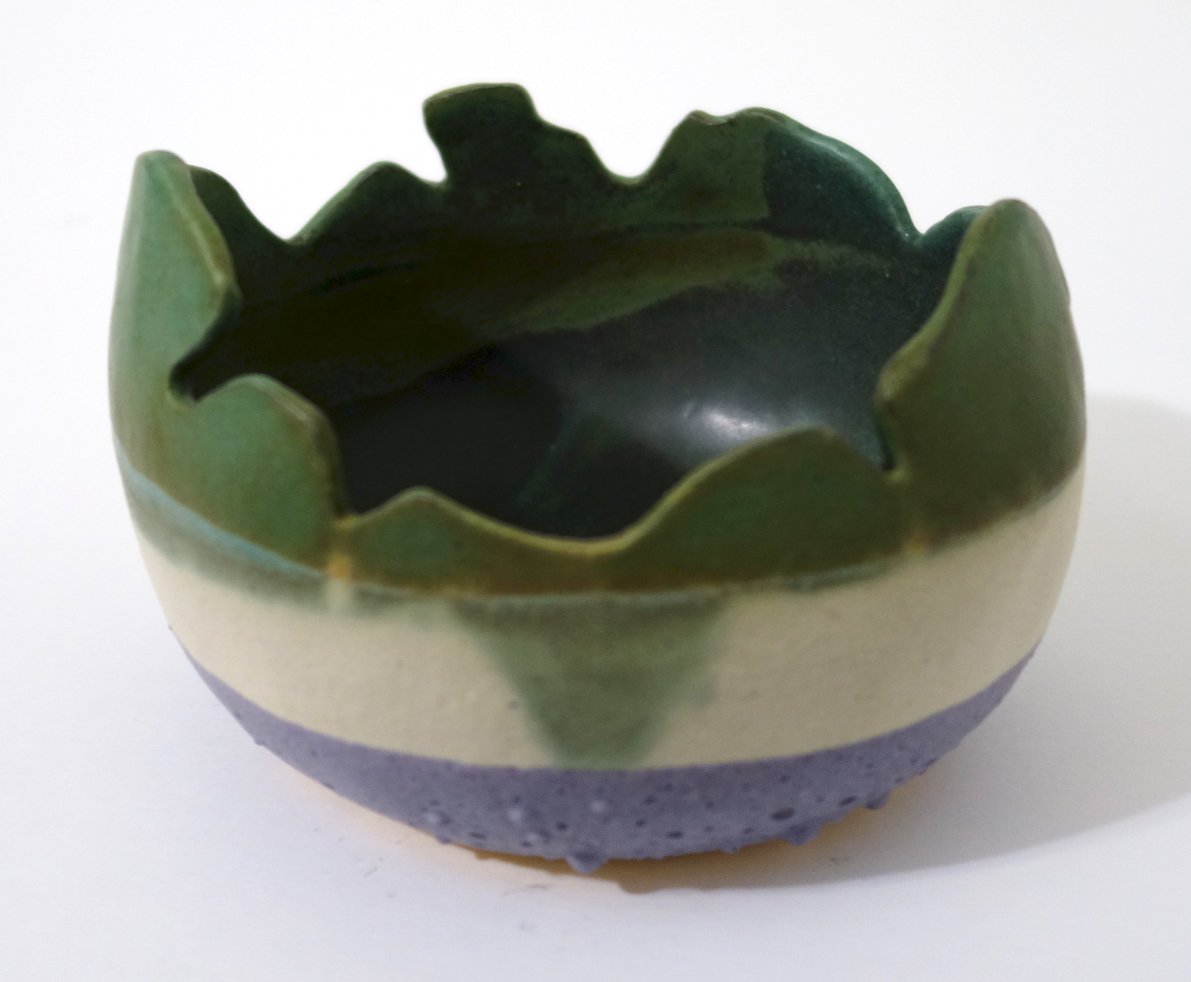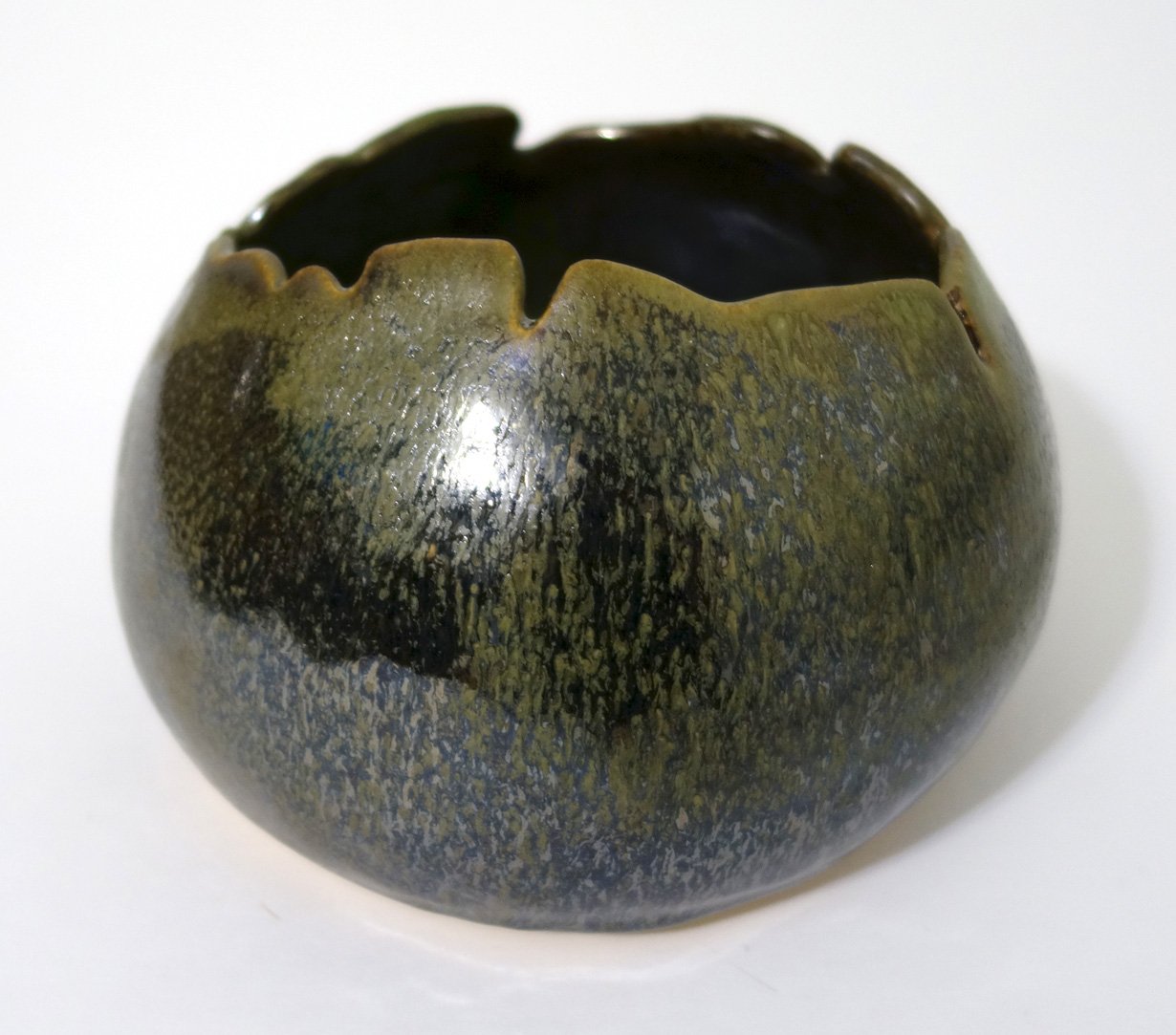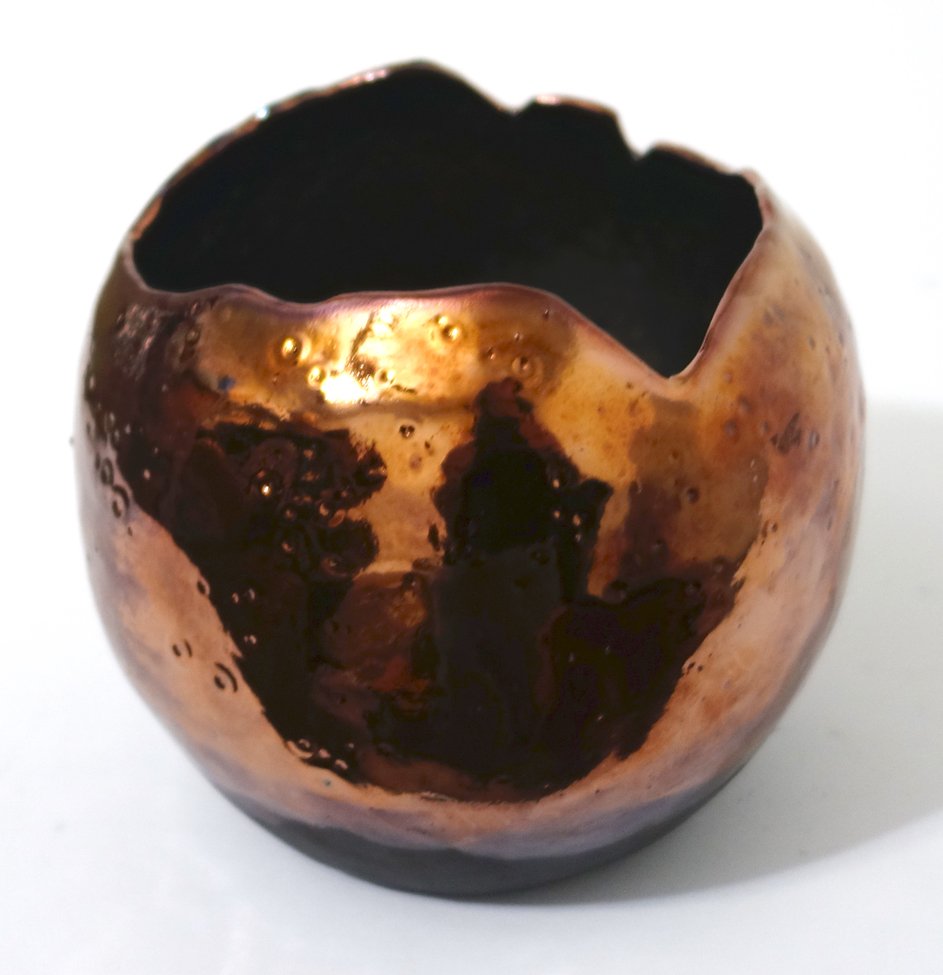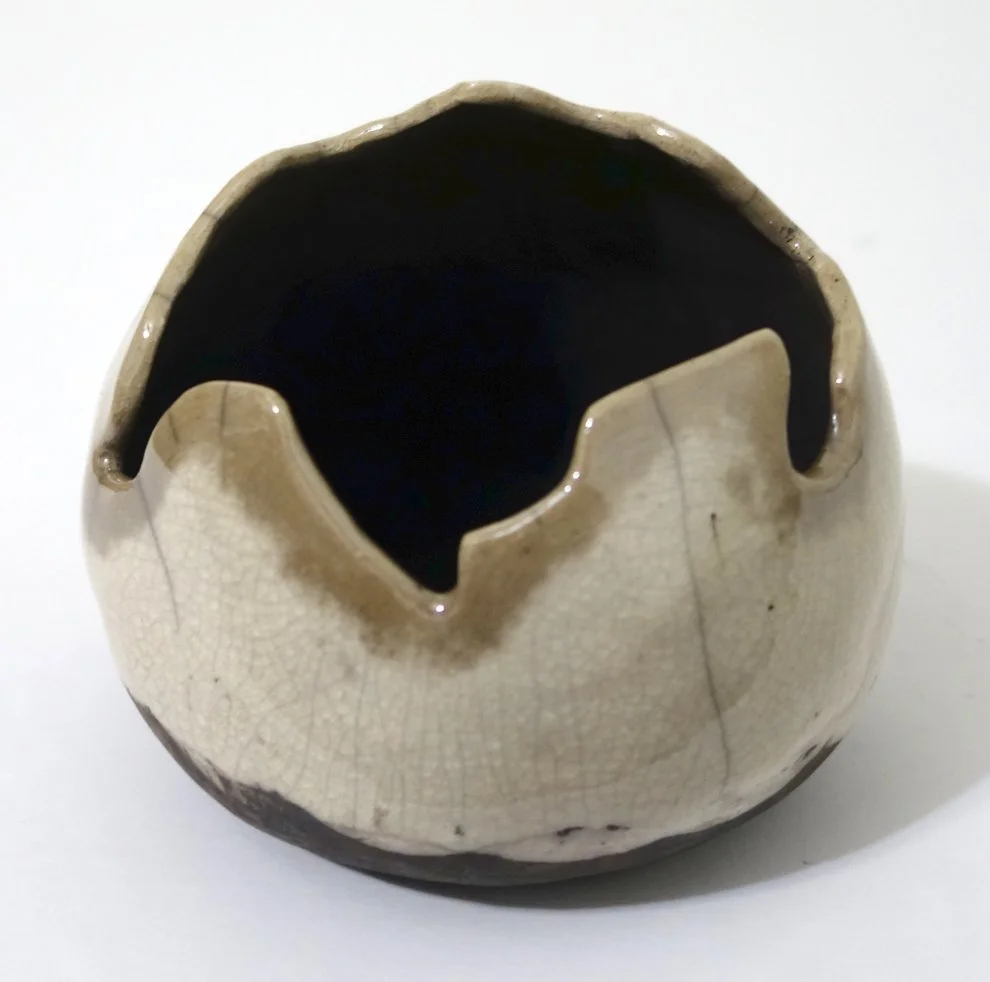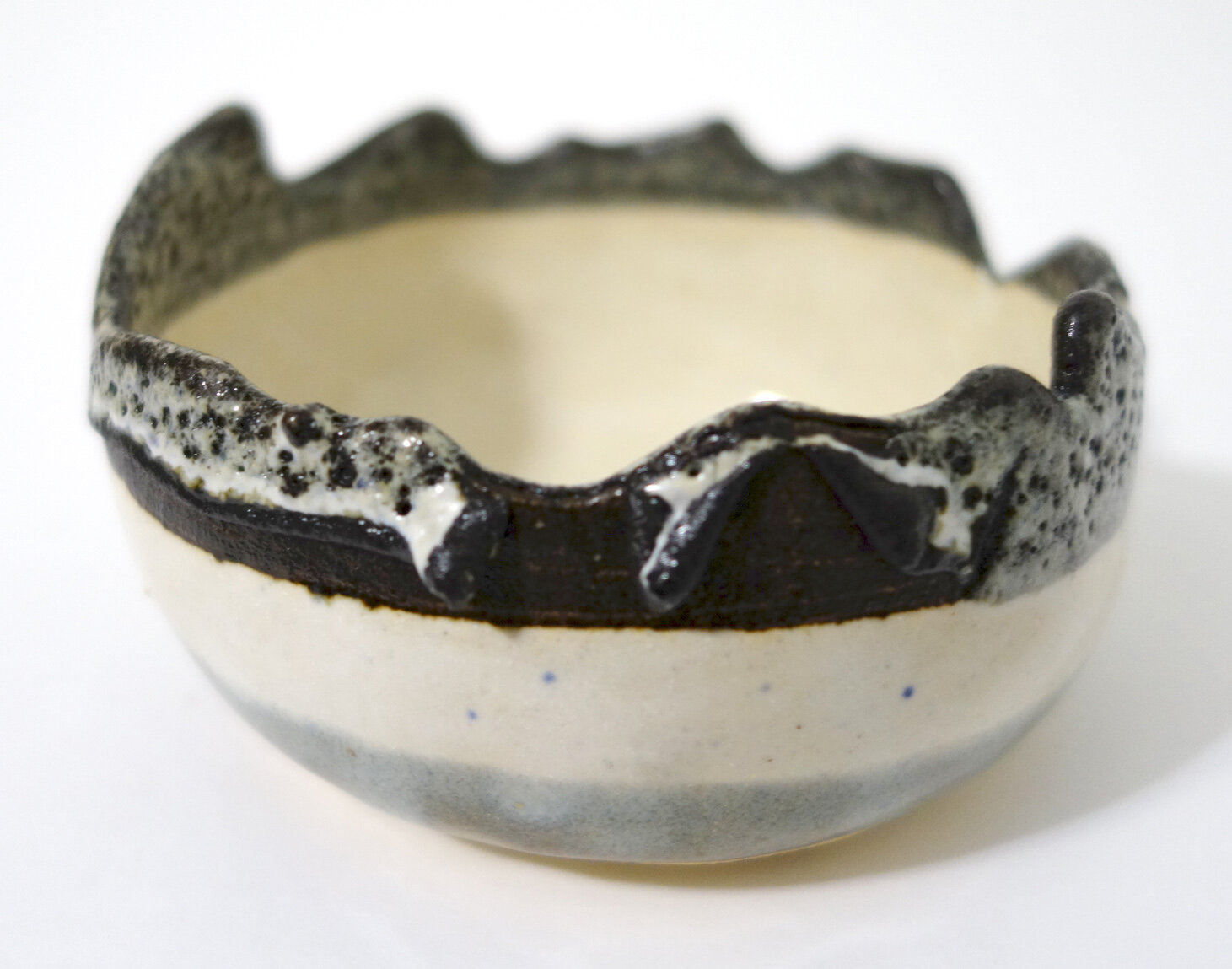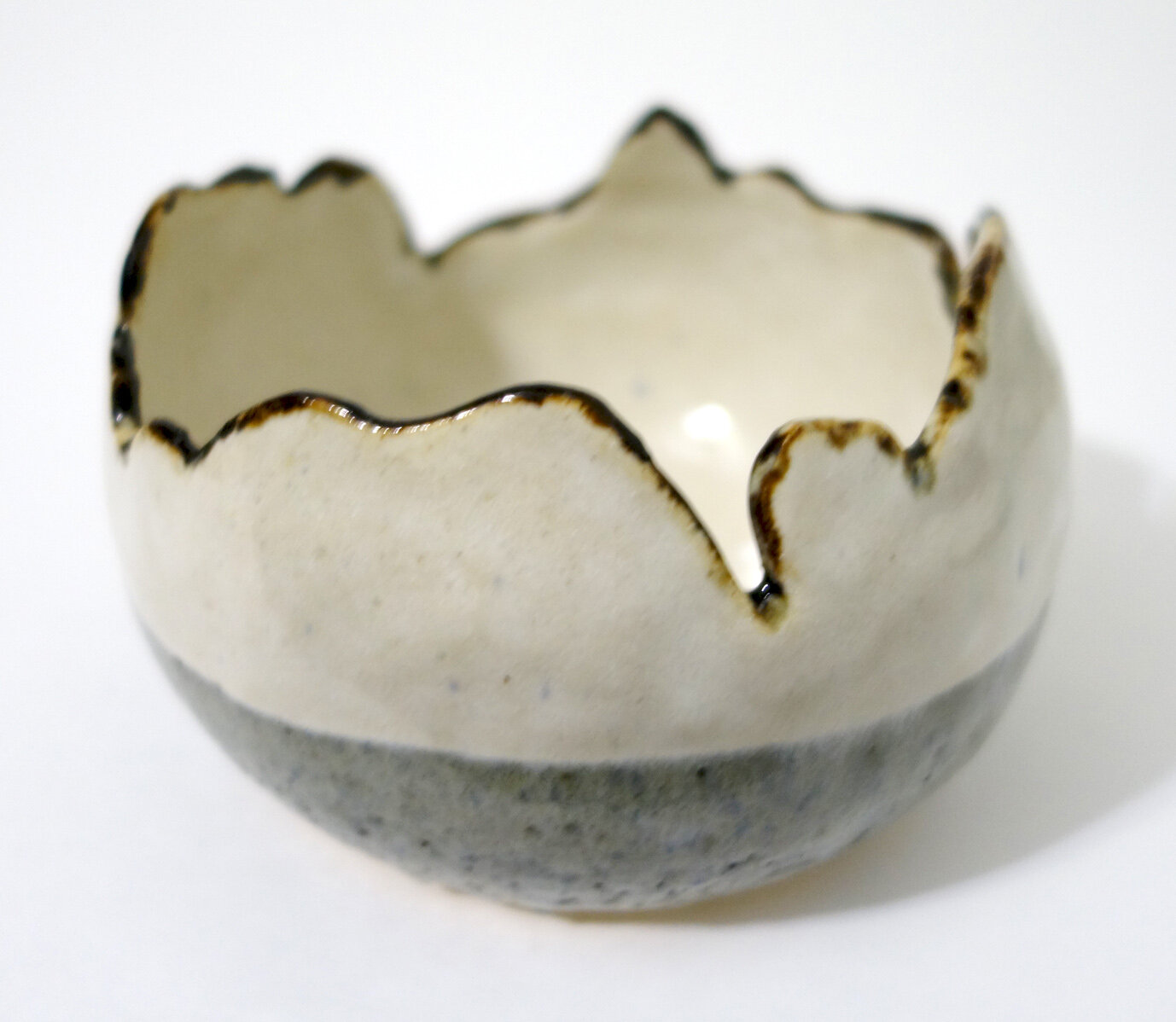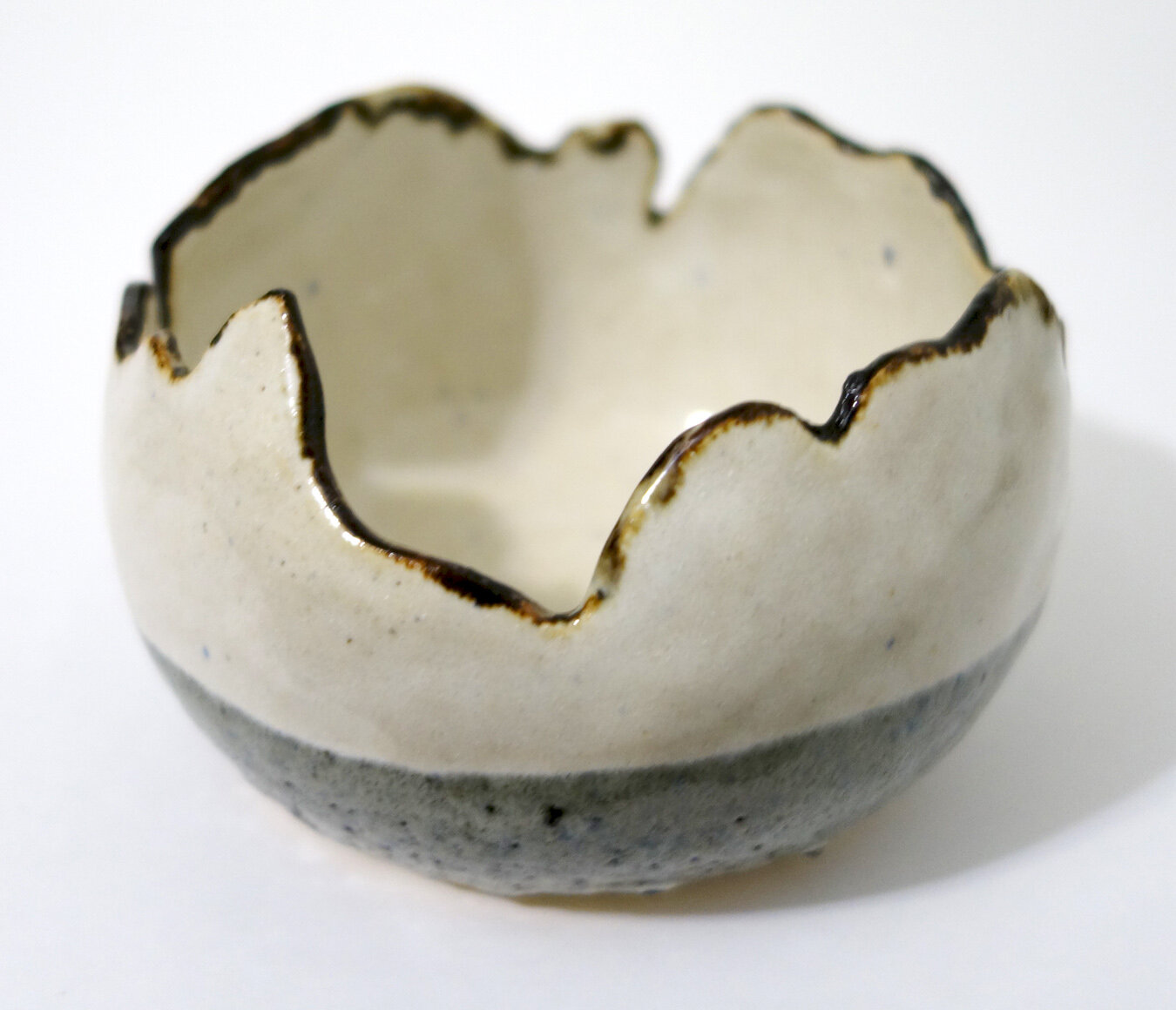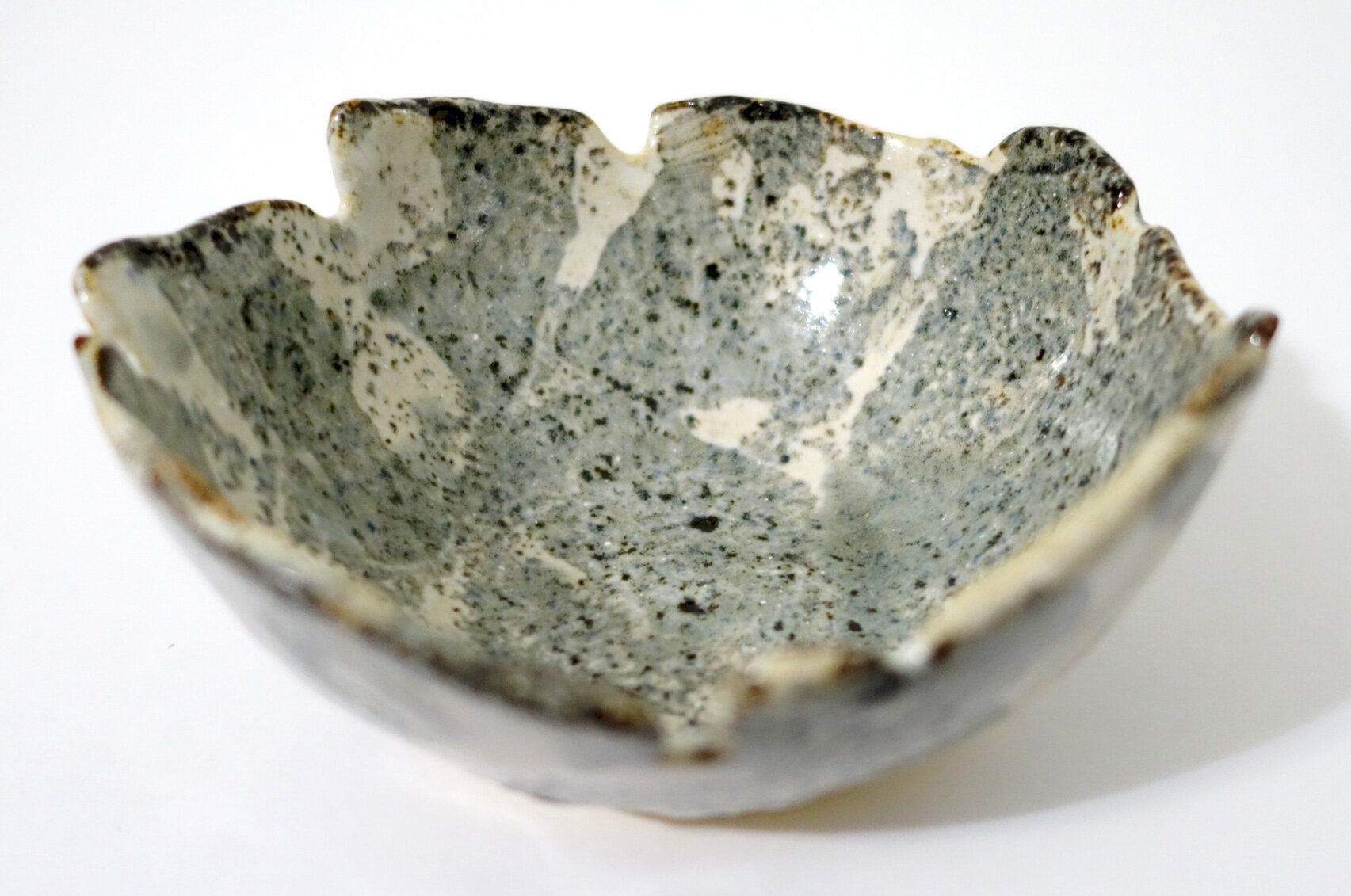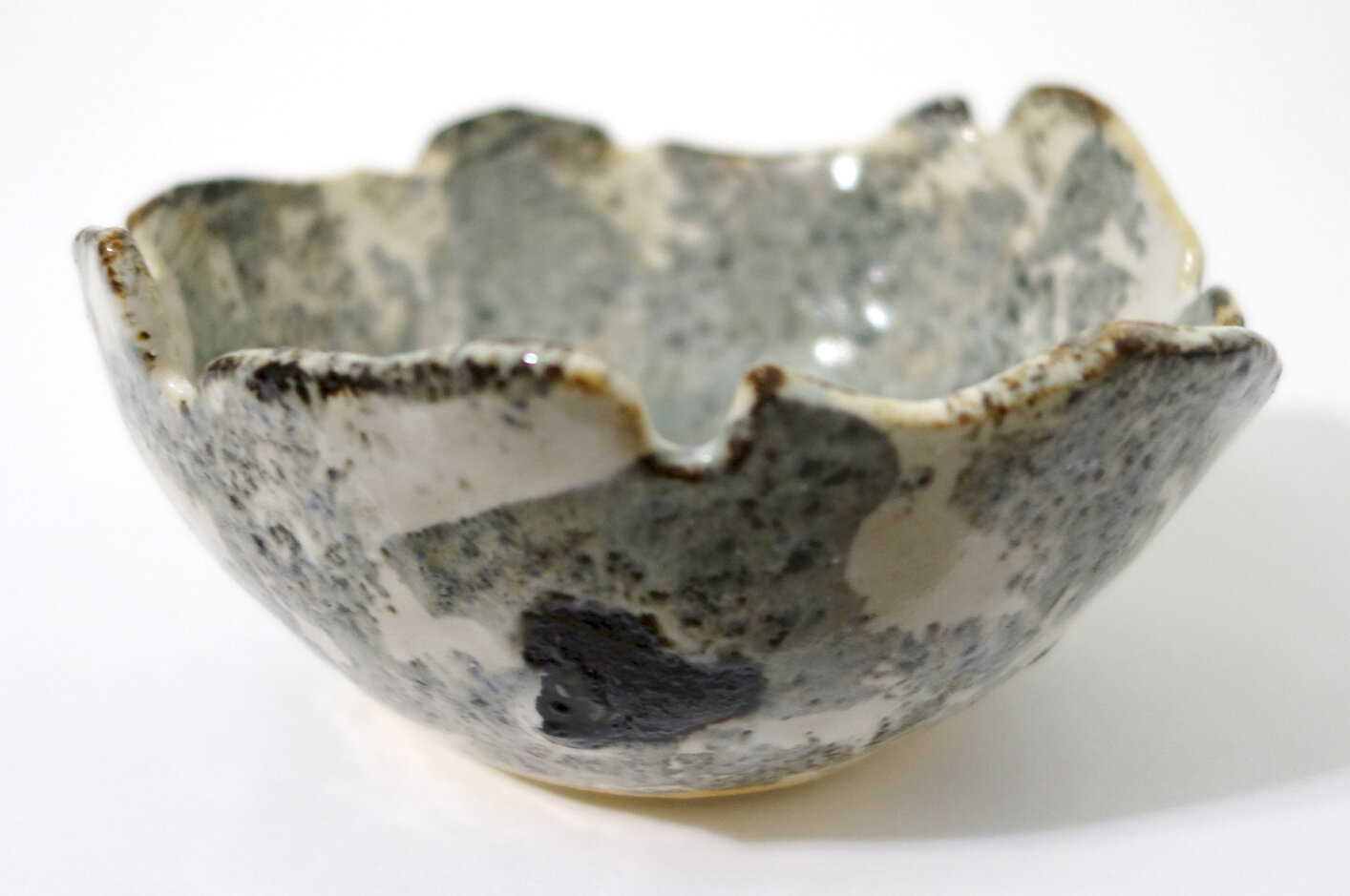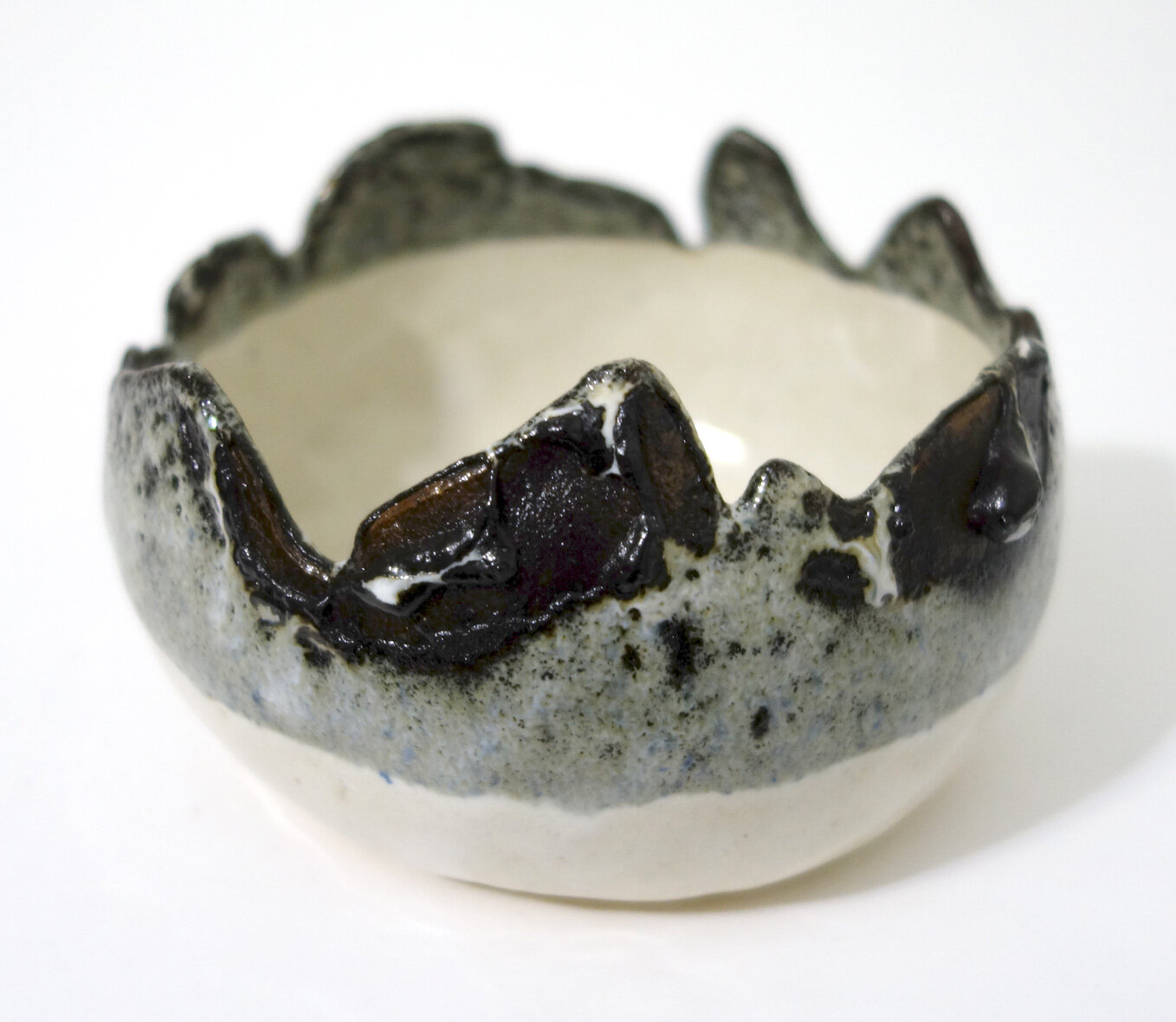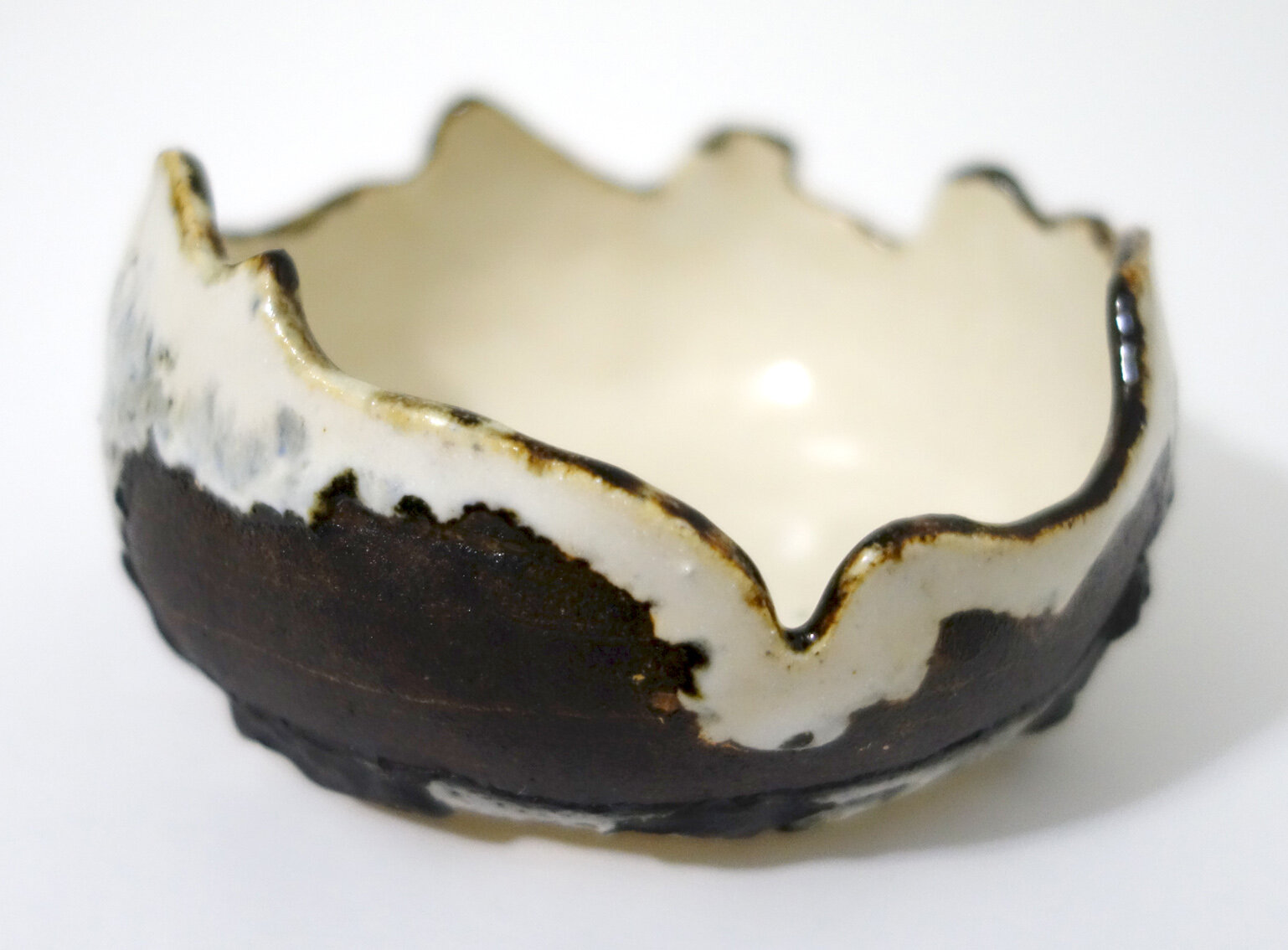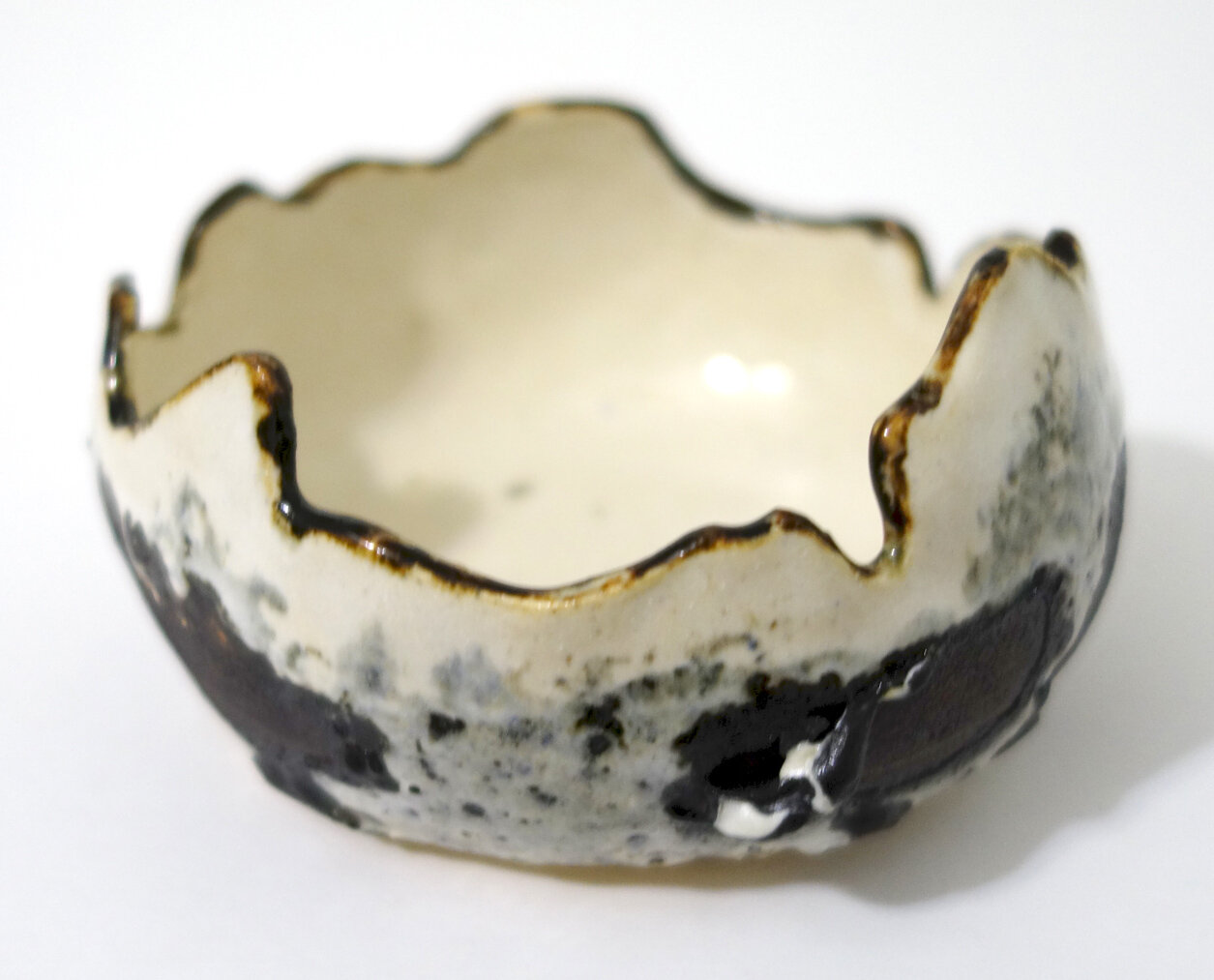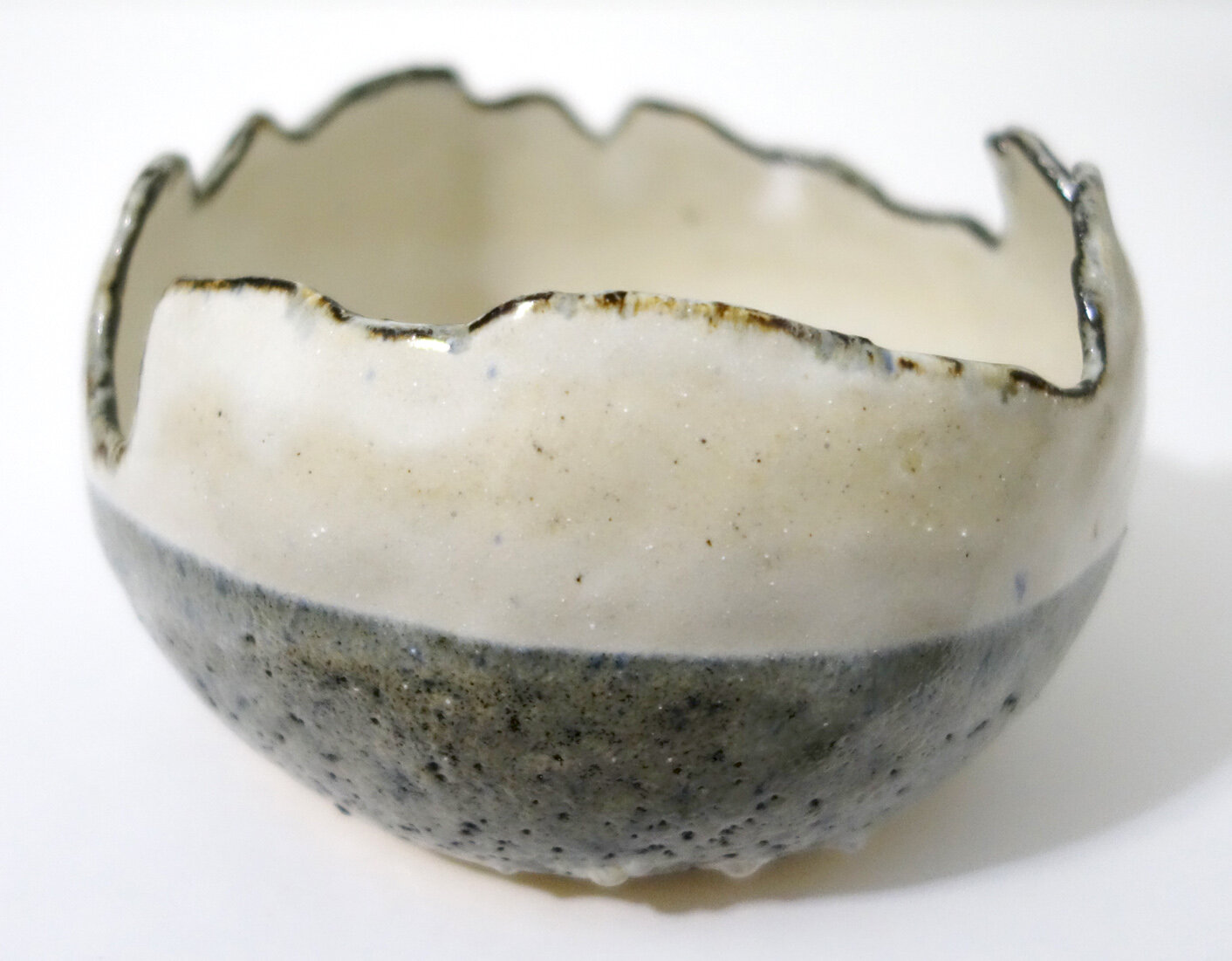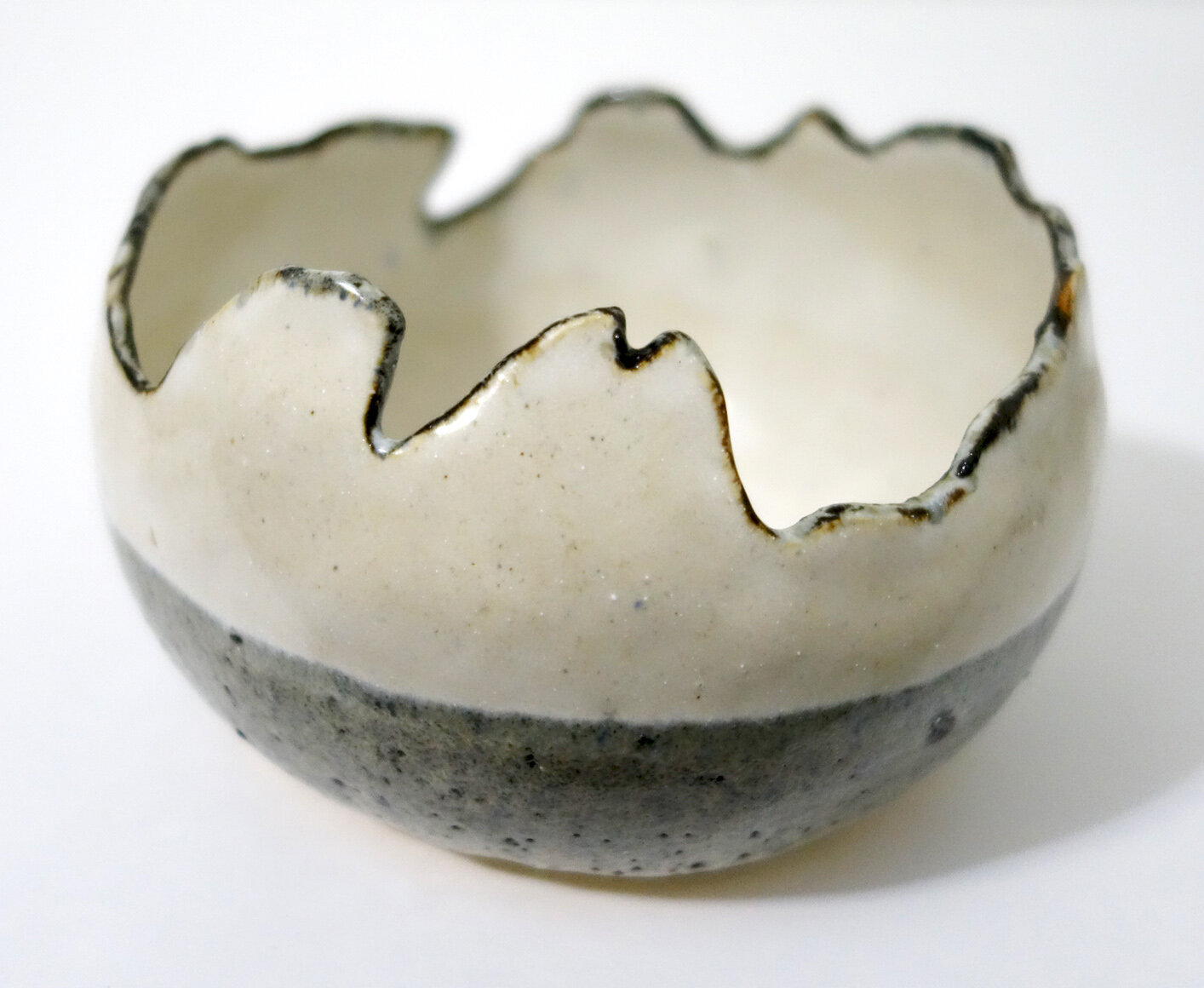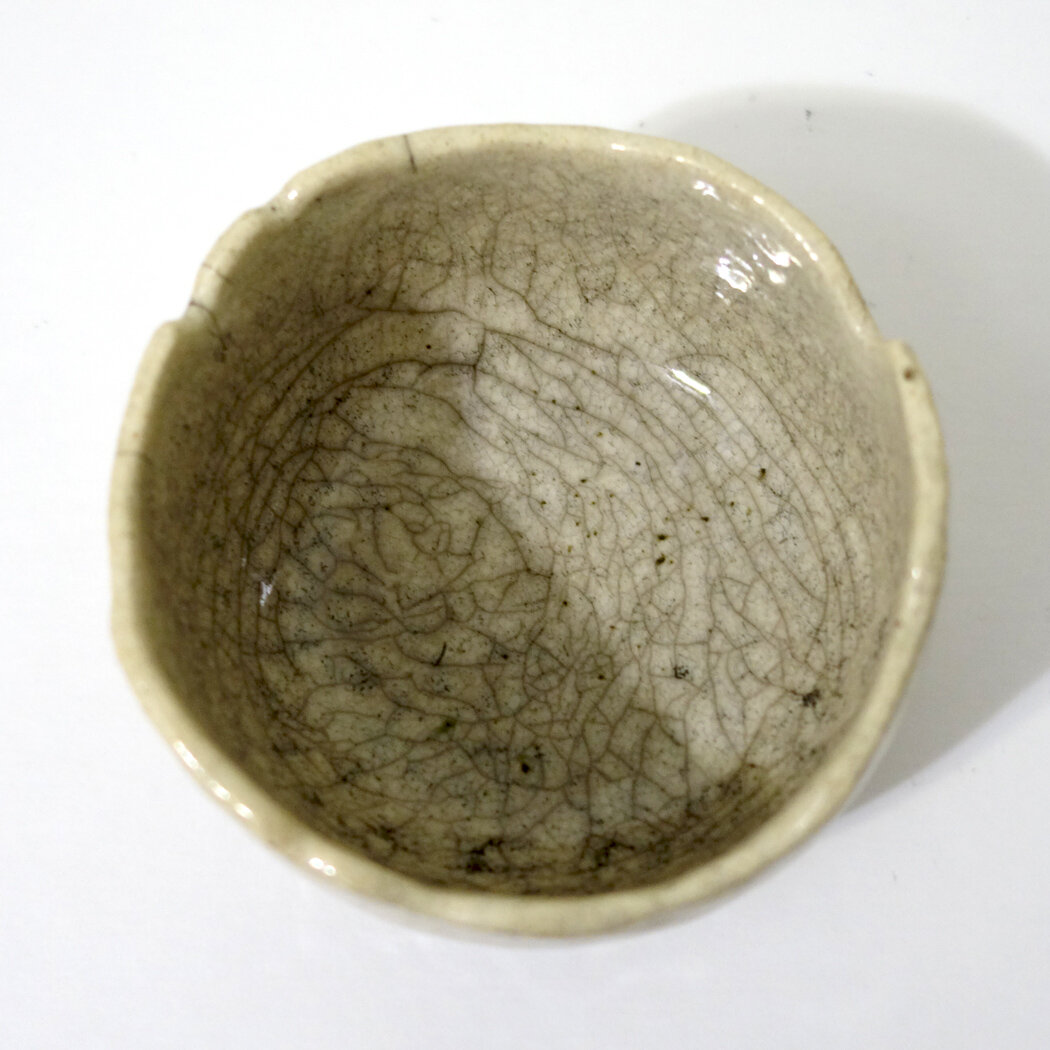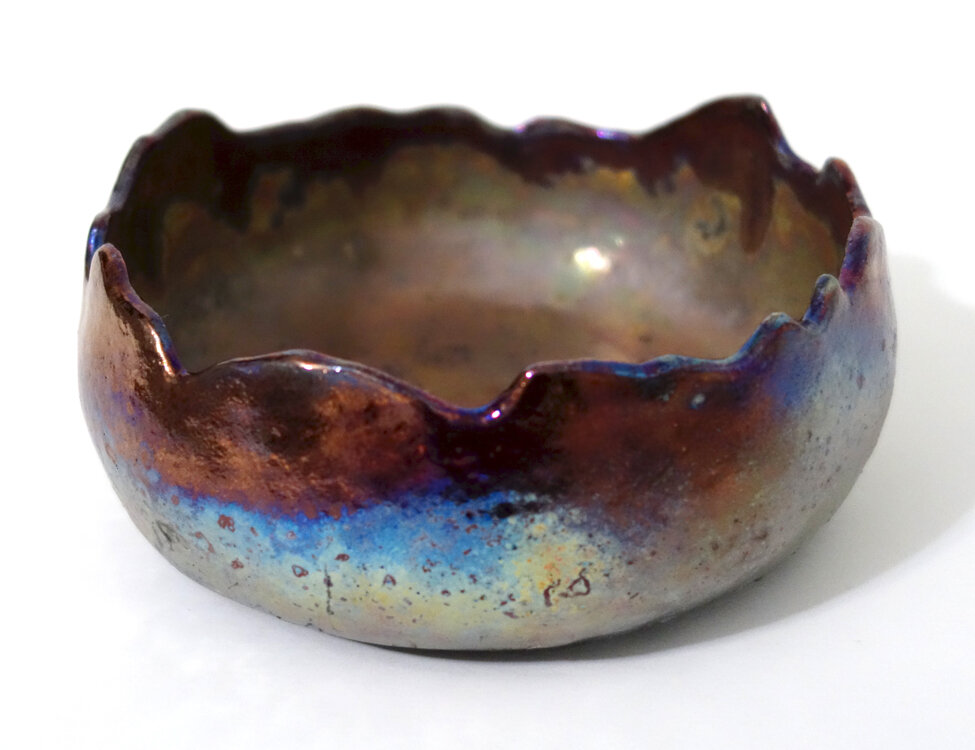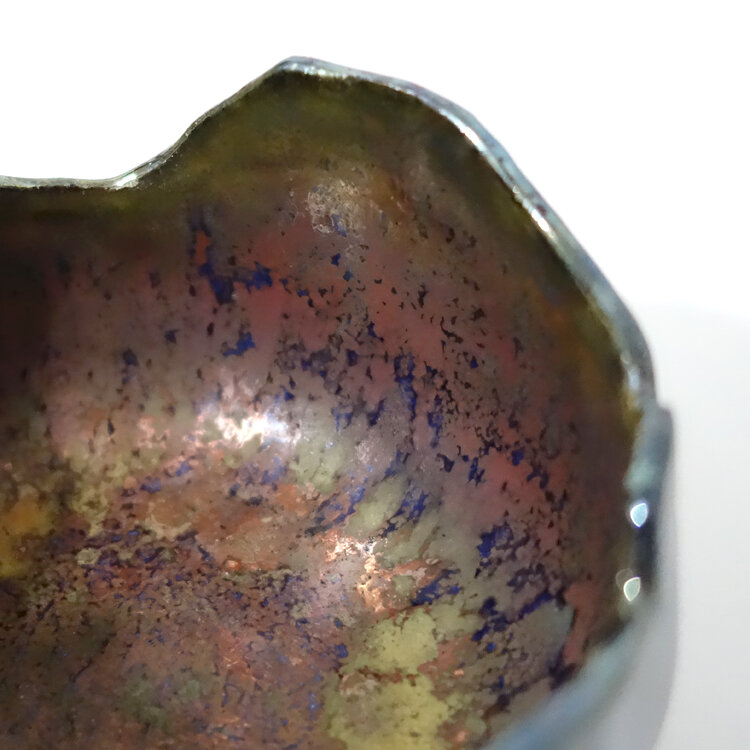Here are my copper glaze pieces! These all turned out beautifully, but let me tell you - I learned that I cannot control what I’m going to get, at least not with all the variables that were at play at this raku workshop! The local temperature and humidity, the time in transferring from kiln to reduction, the organics used, the timing and duration of any burps (adding oxygen back into the reduction environment) - each and every factor influences the final color, shine, and character.
Amusingly enough, from having surveyed some sample pieces in advance of glazing, I determined I quite liked lithium carbonate as the interior glaze and used it on the inside of all four of my copper pieces. For the lips and exteriors, I tried out a few different options - some more lithium carbonate with a touch of Molly’s banding purple, emerald copper, golden rainbow, midnight luster… and a couple of the exteriors look almost identical despite or perhaps because of my experimentation, in concert with the rest of the environmental factors! (Because the exterior glazes didn’t align with my expectations of them, I don’t remember which specific bowls got which exterior glazes.)
In this first bowl, the lithium carbonate interior is matte and relatively dull, and it provides a stark contrast to the dark shiny rainbow lip and exterior of the bowl.











